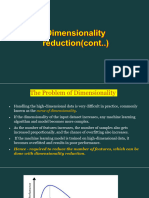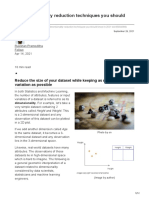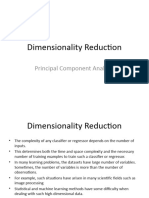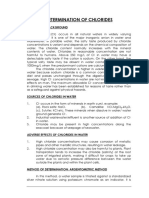0% found this document useful (0 votes)
24 views13 pagesLecture 1
The document discusses dimensionality reduction techniques, focusing on PCA, Kernel PCA, and LDA. It highlights the need for dimensionality reduction to combat the curse of dimensionality in large datasets, explaining how PCA transforms high-dimensional data into lower dimensions while retaining significant information. Additionally, it contrasts PCA as an unsupervised method with LDA, which is supervised and aims to preserve class discrimination in the data.
Uploaded by
vikrammadhad2446Copyright
© © All Rights Reserved
We take content rights seriously. If you suspect this is your content, claim it here.
Available Formats
Download as PDF, TXT or read online on Scribd
0% found this document useful (0 votes)
24 views13 pagesLecture 1
The document discusses dimensionality reduction techniques, focusing on PCA, Kernel PCA, and LDA. It highlights the need for dimensionality reduction to combat the curse of dimensionality in large datasets, explaining how PCA transforms high-dimensional data into lower dimensions while retaining significant information. Additionally, it contrasts PCA as an unsupervised method with LDA, which is supervised and aims to preserve class discrimination in the data.
Uploaded by
vikrammadhad2446Copyright
© © All Rights Reserved
We take content rights seriously. If you suspect this is your content, claim it here.
Available Formats
Download as PDF, TXT or read online on Scribd
/ 13






























































































